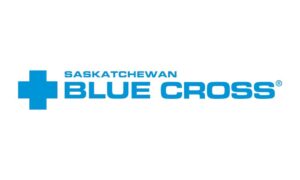How will a national flood insurance program impact home insurance rates?

How will a national flood insurance program impact home insurance rates? | Insurance Business Canada
Property
How will a national flood insurance program impact home insurance rates?
Expert raises concerns about the government’s low-cost coverage
The introduction of a national low-cost flood insurance plan could potentially lower home insurance rates for Canadians, as it would shift some of the financial burden of flood-related claims to the government program.
That’s according to Matt Hands (pictured), VP of insurance at the online mortgage brokerage Ratehub.ca.
Hands told Insurance Business that the Canadian government’s commitment to a national program is a positive step that addresses the country’s widening flood insurance gap. However, he also raised concerns about how the program would be funded and who would benefit from coverage.
“Around 10% of Canadians right now can’t get certain forms of flood insurance coverage,” he said. “Early last year, when the East Coast had a lot of flooding, there were homeowners that just didn’t have flood coverage because they couldn’t get it and were left to deal with the damages to their home on their own.
“So, having a program that would provide overland flood coverage is a good step forward.”
National Flood Insurance Program – what are the immediate challenges?
The federal government reaffirmed its commitment to standing up the National Flood Insurance Program (NFIP) in its budget announcement last month. The 2024-2025 budget includes more details about how the government aims to deliver the program it had pledged a year ago.
Among the plans are the introduction of a flood reinsurance scheme and a distinct insurance subsidy for households facing heightened flood risks.
Hands said the budget still leaves many unanswered questions, such as whether the programme will be available to all Canadians or only those deemed at significant risk by insurance companies.
He also said that consistently funding such an extensive program poses a significant concern, especially considering the increasing frequency and severity of natural disasters.
“We know that flood damage can be an expensive proposition; we’re talking up to $40,000 in repairs, depending on the size of the home and the type of damage, but it is not a cost that many Canadians are prepared to bear on their own,” said Hands.
“It boils down to whether this will be accessible to all Canadians. Initially, when I heard about the program, I thought it aimed more at supporting the roughly 10% of Canadian homes that insurance companies refuse to insure due to significant flood risks. They perceive these risks as almost inevitable, hence their reluctance to cover them within the insured period.
“If [the government is] offering low-cost solutions, other Canadians might say, ‘Why can’t we take advantage of this? Why are we paying more for insurance and others aren’t?’”
Being proactive about home insurance and flood coverage
Following the budget announcement, the government reiterated its collaborative efforts with provincial entities and insurance industry partners to establish a cost-effective flood insurance program tailored for high-risk properties within the next 12 months. A sum of $15 million has been earmarked to facilitate the rollout of the NFIP by 2025.
However, until the NFIP is in place, Canadians must continue to take proactive steps to ensure they have coverage for flood risks.
“Flood insurance isn’t obligatory, so you’re not compelled to have it. Some Canadians might not have it simply because they haven’t added it or never perceived themselves at risk,” Hands said. “But if you reside in a flood-prone area, it’s worth inquiring with your insurer or exploring other options.”
He also advised homeowners to consult with their brokers about adjusting their policies and reassessing their coverage limits, especially given the rising cost of repairs.
“Many policies offer guaranteed replacement protection, ensuring you’re fully covered in case of a total loss. However, with flood insurance, if your repair costs exceed your coverage limit, you’ll be responsible for the difference,” said Hands.
Hands expects home insurance prices to continue rising, particularly in high-risk areas, due to increased severe weather events, inflation, and higher repair costs.
Do you agree that the National Flood Insurance Program could impact home insurance rates? Please share your thoughts on this story below.
Related Stories
Keep up with the latest news and events
Join our mailing list, it’s free!






